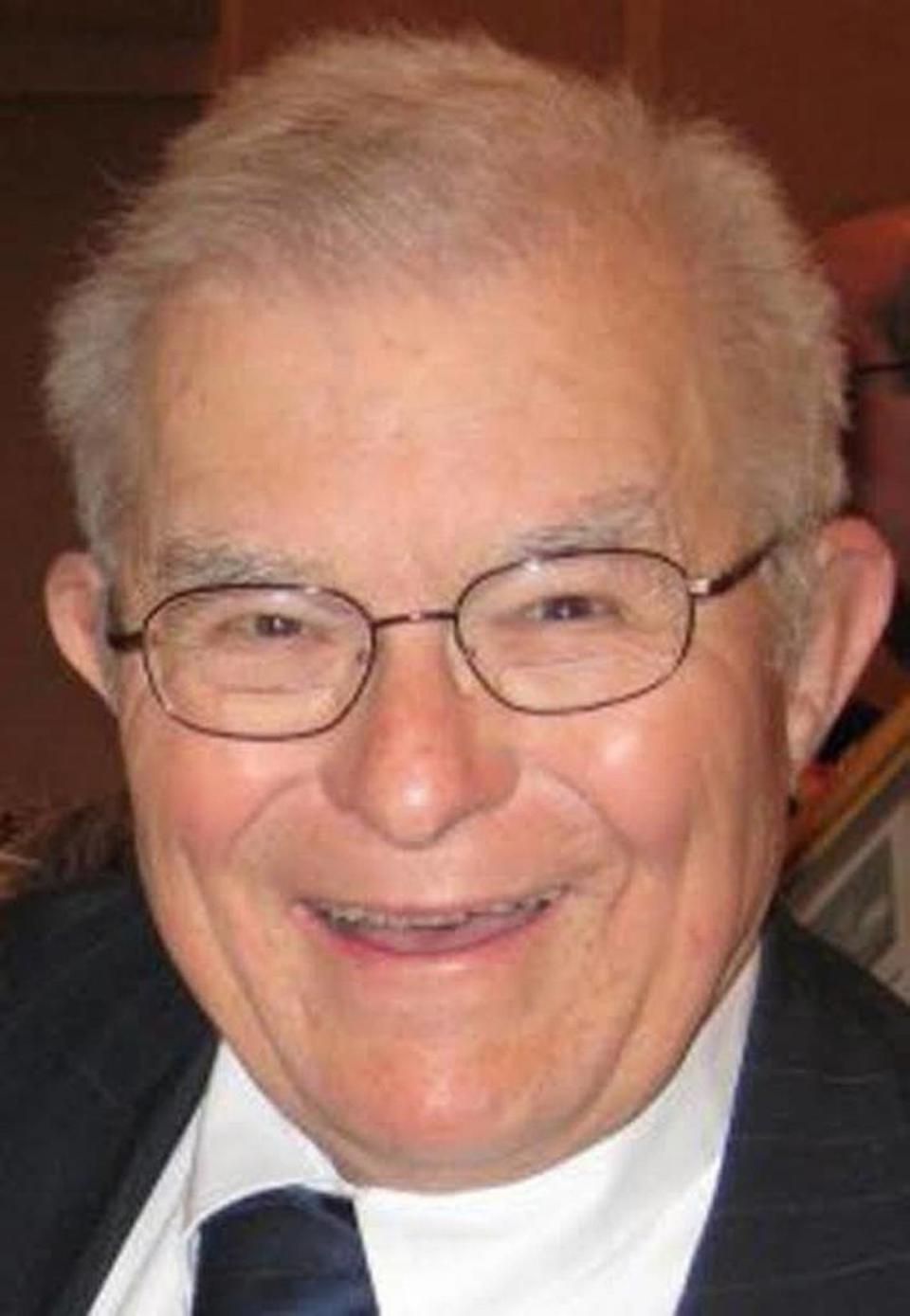Journalist, wordsmith Al Smith showed all of us how to love Kentucky and make it better
- Oops!Something went wrong.Please try again later.
There came a night on KET’s “Comment on Kentucky” when Al Smith, the great and gracious host, decided to embarrass me a little. Or maybe he just wanted to broaden my horizons, which he liked to do. Not just for me. For everyone.
The name of Thomas D. Clark, the revered historian, had come up — as it did often on “Comment.” Al was a journalist with a sense of history. Since his beat was Kentucky, he had a particular interest in Kentucky history, and Tom Clark, who was at the time 98 or so, had been writing that history since 1937. Al loved to invoke his name. It elevated the discussion.
“Dr. Clark,” Al told his viewers, “invited Neikirk to go to Estill County with him, and Neikirk hasn’t bothered to call.” I was on “Comment” by virtue of my role as managing editor of The Kentucky Post, the now defunct newspaper serving Northern Kentucky. You could not live in a more urban place and still be in Kentucky. But Al knew my family was from Estill County, because Al took the time to know the family backgrounds of anyone with whom he associated.
Professor Clark, on a visit to Covington, told me of some mountain land he owned in Estill County and invited me to hike it with him. I said I would, but my answer was perfunctory. Dr. Clark was fit for 98 but still 98. Now, on live television, Al had cornered me into a commitment. Dr. Clark was probably watching. Most of Kentucky was. In fact, if someone claims to be a Kentuckian but didn’t watch Al Smith on “Comment” at 8 p.m. on Friday night, check the claimant’s credentials.
Soon enough, I was walking beside Dr. Clark, an extraordinary teacher who brought the woods to life with the history they held. He pointed toward a bend in Station Camp Creek where Daniel Boone, on his first excursion into Kentucky, had stockpiled hides. A Shawnee hunting party confiscated the bounty and took Boone and John Stuart captive. Kentucky history as we know it could have ended then and there. “Right there?” I asked, stunned to think that an iconic moment of American history had played out along a creek I’d paddled countless times as a boy. “Within a gunshot of there,” Dr. Clark answered, using a beautifully quaint and accurate measure of distance.
The gift of getting to know Tom Clark, and hiking in Estill County with him — we went back several times — was a gift to me from Al Smith. It was the sort of gift Al gave to everyone, including scores of us in journalism whom he mentored but also to his loyal viewers. His gift was to teach us to appreciate our family histories but also our state’s history and to see current events through the lens of both. Public policy, at least good public policy, is informed by our understanding of families, our own and each other’s. It is informed by, too, by a firm grasp of history.
Journalism is, at a minimum, a calling to cover public policy. How’s it made. The pros. The cons. The players. It’s often like covering sports. Winners. Losers. The next game.

Al dedicated his every waking hour to journalism’s higher calling. That is, to guiding a community, a state or a nation toward public policies that serve the common good. He had no hobbies. He went to a gym, but probably so he could discourse with the person on the next treadmill over. Al loved an audience. His idea of a good time was a four-hour breakfast at Panera’s with a couple of people dissecting some issue and how to solve it. The Al you saw on TV was the same Al who settled back with coffee for a long chat on oral health for the poor or preschool for all.
Al Smith was Kentucky’s poet laureate of public policy. By marshaling his words, whether in print or broadcast, he pointed his adopted state (like Tom Clark, Al Smith arrived here from further South) toward a better future. He wanted a kind, fair Kentucky where opportunity is abundant, the air and water clean, the public health protected, and the schools excellent.
Al knew I would enjoy Tom Clark’s company, but he also knew I would be better at reporting on Kentucky public affairs if I fell under Tom Clark’s spell, if I read what Tom told me to read, if I thought about current events in the context of history.
And by the way, 98-year-old Tom Clark, hiking stick in hand, did just fine walking those mountains. So did 99-year-old Tom Clark. He slowed a little after 100 and died a couple of weeks short of his 102nd birthday, his next book still in his typewriter.
Al made it to 94, dying just before 5:30 p.m. on Friday, March 19. Weak and weightless from the ravages of an illness, he went quietly to what he had called a month earlier during a last conversation with some of his mentees his pending “parting.” On his final day, a neighbor came by to say a prayer, and Al — always ready to talk — moved those noble lips to say a few words himself. He could not.
And with that, he left Kentucky, and his example of how to love it, to us.
Mark Neikirk lives in Crescent Springs and directs Northern Kentucky University’s Scripps Howard Center for Civic Engagement.

